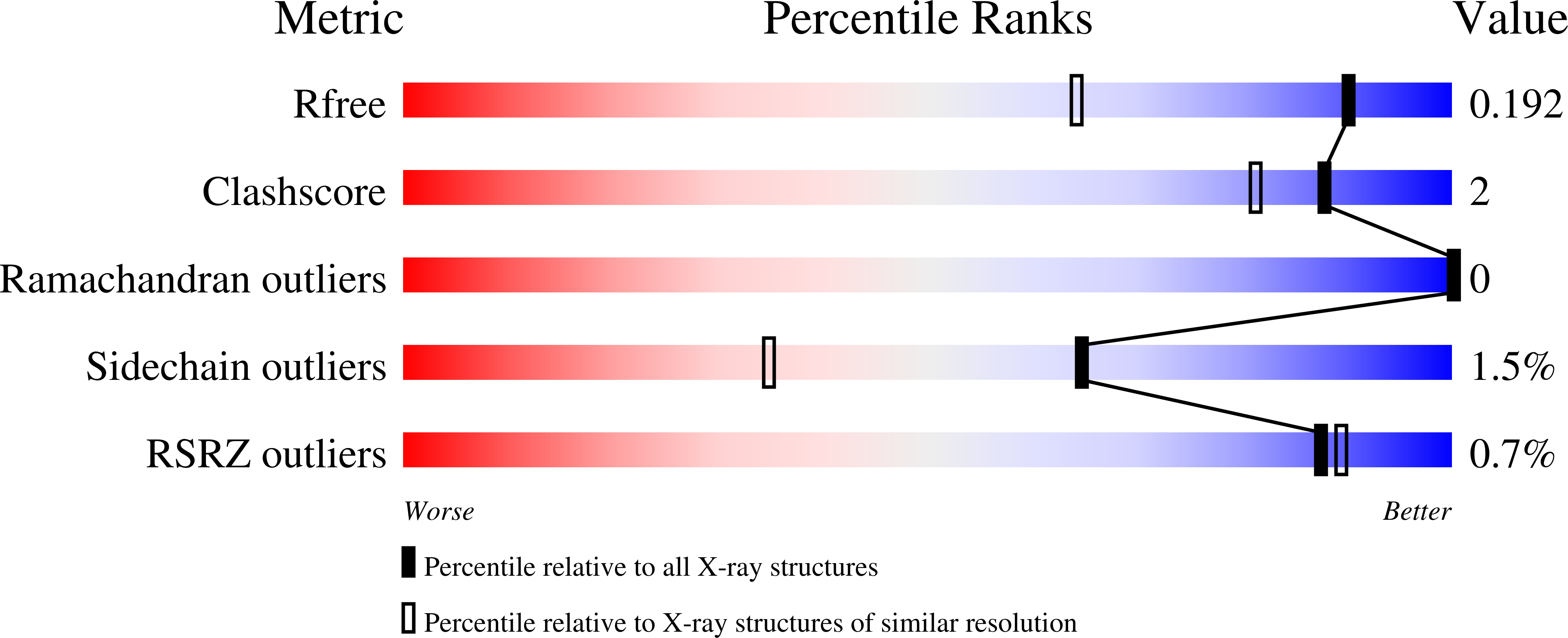
Deposition Date
2021-10-14
Release Date
2021-12-22
Last Version Date
2024-11-13
Entry Detail
PDB ID:
7Q02
Keywords:
Title:
Zn-free structure of lipocalin-like Milk protein, inspired from Diploptera punctata, expressed in Saccharomyces cerevisiae
Biological Source:
Source Organism:
Diploptera punctata (Taxon ID: 6984)
Host Organism:
Method Details:
Experimental Method:
Resolution:
1.45 Å
R-Value Free:
0.19
R-Value Work:
0.14
R-Value Observed:
0.15
Space Group:
P 21 21 21


